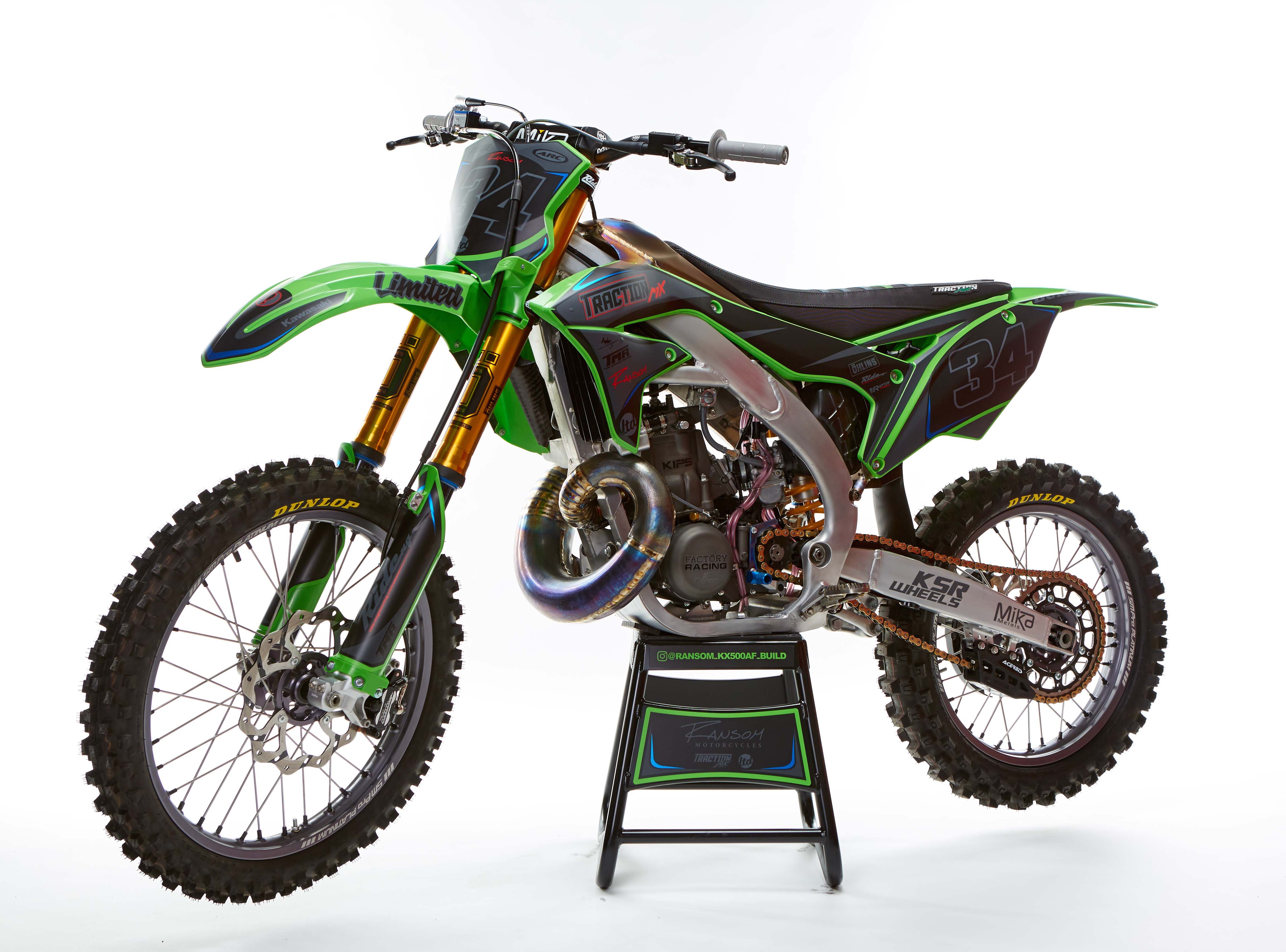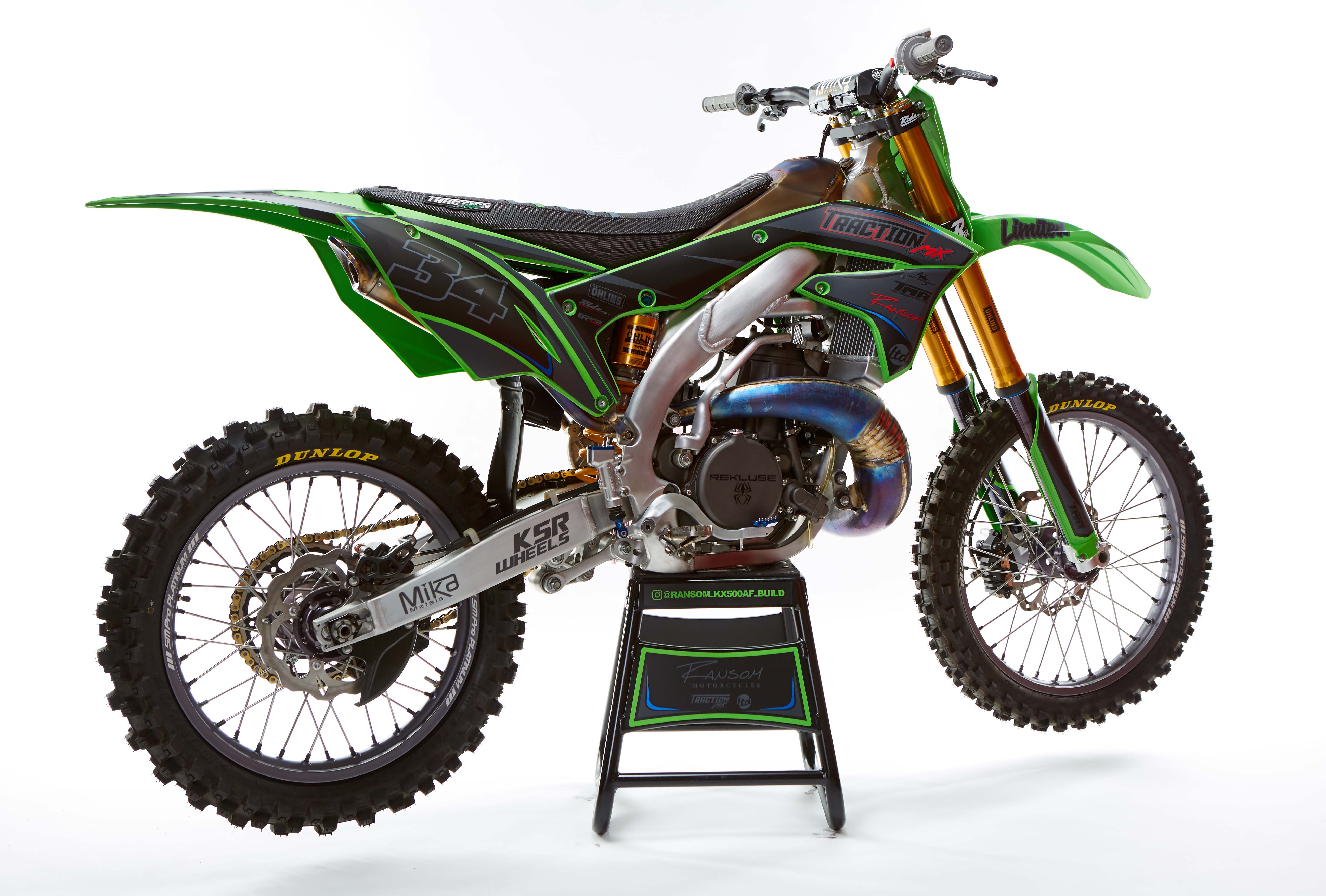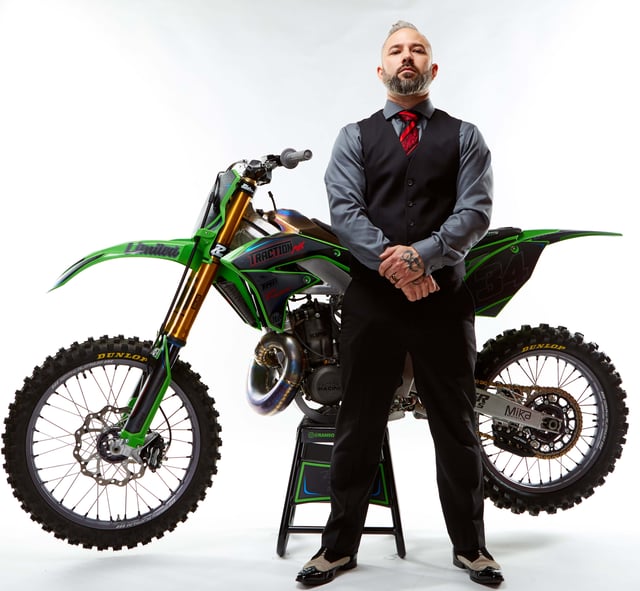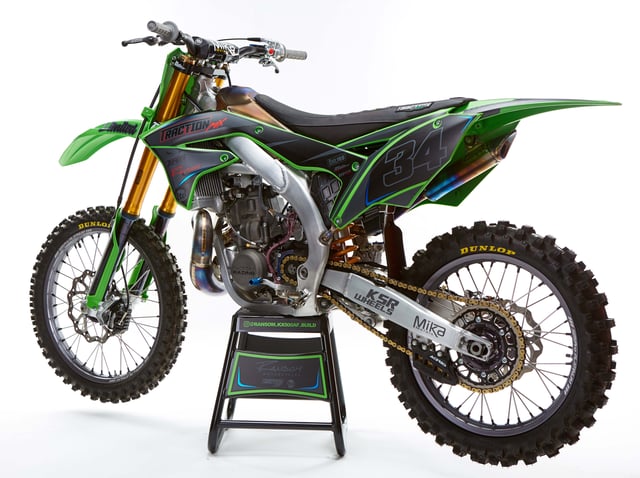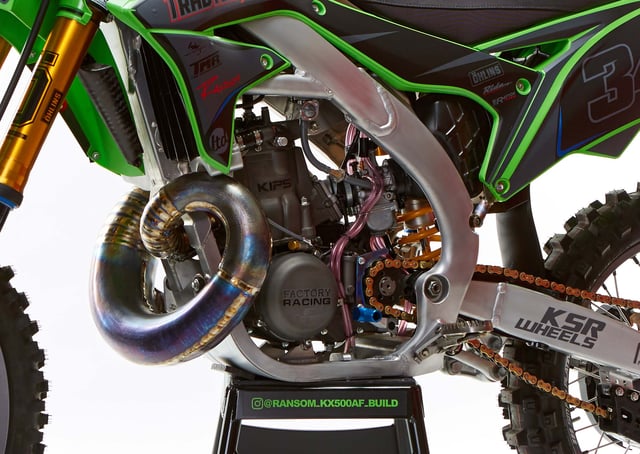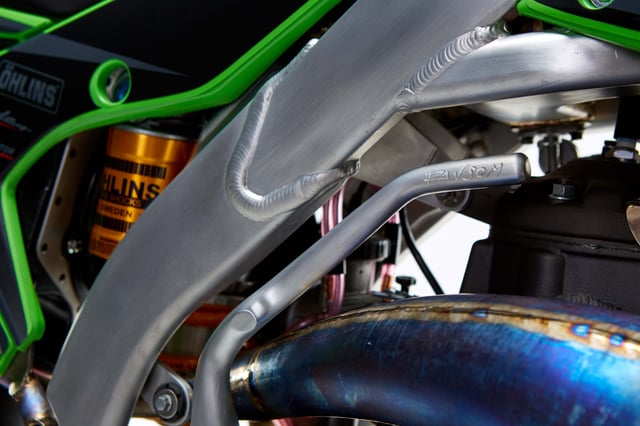This bike build story begins like so many others. New Jersey’s W. Robert Ransom was introduced to dirt bikes at three years old. He fell in love with riding. The sport consumed him to the point where he would dream about bikes, fix them, and tinker on them. Yearning to stay involved in the sport no matter what, Ransom grew to the age where he could finally own his dream bike. That’s where the similarities between Ransom and so many others end. Ransom, now 38 years old, started working on dirt bikes when he was seven years old, because his father passed away. Being involved at the mechanical level from such a young age accelerated his passion for motorcycles. Ransom admits, “My mother was raising me by herself, and she saw how much dirt bikes kept my attention. In order to keep me out of trouble, she supported anything that involved a dirt bike. She kept it like tunnel vision for me.”
Most riders have a passing knowledge of maintenance and how a motorcycle operates. Those who get to build their ultimate bike often invest a lot of money in aftermarket parts and accessories. W. Robert Ransom listens to the beat of a different drummer. He decided to build his rendition of an aluminum frame Kawasaki KX500, and he did so by spending two years on the project. During that time, he fabricated his own subframe, fuel tank, and exhaust system out of titanium. What transpired is likely the most pristine and tricked-out KX500 build ever.
Frankenstein’s monster this bike is not. Instead, it is an aesthetically pleasing interpretation of one man’s dream machine. Actually, make that two people. One of Ransom’s mentors, who introduced the New Jersey native to metal work as a teenager, was interested in Kawasaki KX500s. The 1997 Honda CR250 aluminum frame two-stroke had been introduced two years prior, which was monumental. The frame was a twin-spar aluminum design, which bucked the trend of the more conventional steel chassis. Ransom’s mentor brought up the idea of shoehorning a 500cc two-stroke into an aluminum chassis. The idea didn’t gain much traction. Ransom admits, “At that time I had no idea of how to make anything out of metal. I couldn’t machine, weld or shape metal. It seemed so far out of my scope that I thought it was impossible [laughter].” The project was slightly beyond his capabilities, so the idea was shelved. However, W. Robert vowed to one day pursue the dream of creating an aluminum frame KX500.
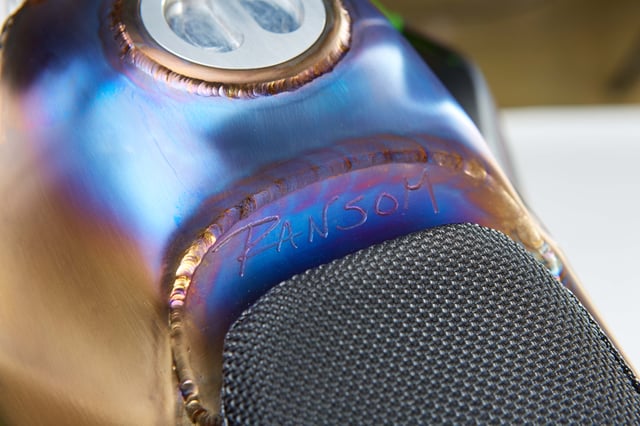
Dreams don’t die, at least not for W. Robert Ransom. Some 17 years later, he began construction on his very own Kawasaki KX500AF (Aluminum Frame). Ransom wisely launched an Instagram page in conjunction with the build to show his audience the step-by-step processes. As Ransom states, “It became more of a what to do and what not to do, as far as aluminum frame conversions.” The page was wildly successful, as @ransom_kx500af_build rocketed up to nearly 24,000 followers. Ransom’s Instagram page is still active and features close to 300 posts on various stages of the build. It’s a must-see for any metal fabricator.
Aluminum frame KX500s are nothing new to motocross. Notable custom bike company Service Honda made their first KX500AF way back in 2006. Other fabricators have also taken a stab at the lengthy process of constructing such a machine. The popularity stems from people’s love for the venerable KX500 engine, as well as their distaste for the archaic steel chassis that housed the powerplant. The vast majority of Open-class racers have long favored the engine characteristics of the KX500. Unfortunately, the frame and handling traits held the bike back from its true potential. It makes sense to mix old (a fire-breathing KX500 engine), with new (a modern-day aluminum frame).
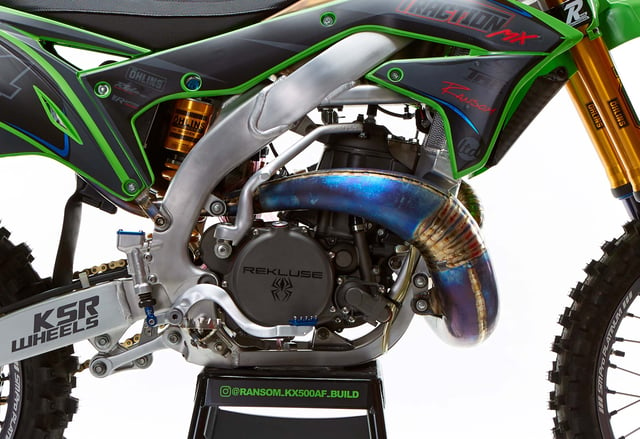
Ransom’s first hurdle was in finding a KX500 engine. Kawasaki ceased production of the bike after 2004. What made his quest even more difficult was the fact that most racers had shied away from Open-class bikes as racing organizations slowly phased out Open displacement classes. Fortunately, W. Robert found a diamond in the rough. “I picked up a 2000 model year KX500 engine, which was actually a basket case,” explains Ransom. “It was literally piled up in pieces in a box. A buddy of mine had it sitting on a shelf. He’s the head service guy at a local dealership. A rider came in with the engine, and he had a catastrophic loss in the bottom-end of his KX500. The guy realized it would cost a lot of money to fix, so the engine sat on a shelf in a box for two years. I just so happened to call my buddy to ask if he knew of anyone that had a KX500 engine. He told me that if the guy didn’t come back in another week to pick up his box of engine parts, then I could have it. I ended up with it.”
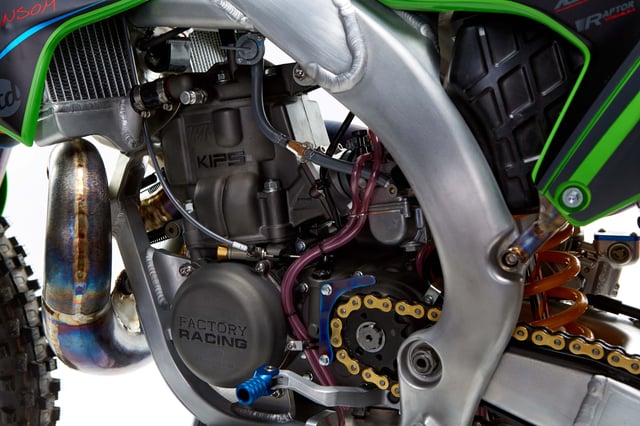
Like a paleontologist unearthing the remains of a T-Rex, Ransom had to build the engine from the ground up. He found help in the form of Tom Morgan Racing. TMR did the port work, modified the cylinder head, and balanced the crank. Morgan also meticulously cleaned up some of the transmission gears, which was a necessity. That’s because Kawasaki no longer sells gears for the KX500. TMR installed a ProX piston, clutch basket, outer hub, inner hub and pressure plate. Rekluse stepped in and modified the bike’s pressure plate to accept the bulletproof TorqDrive clutch. With the engine work completed, it was on to the next challenge.

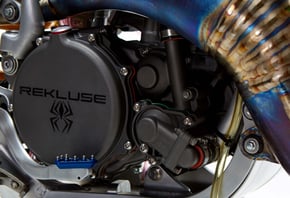
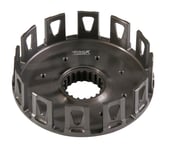

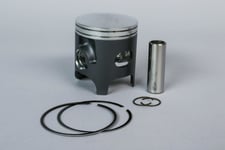
Click here to check out what ProX offers for your build.
Next up came the biggest decision of all – what model and model year frame to choose? Ransom elected for frame spars off a 2009 Kawasaki KX450F. He put in extensive research to make that decision. It was a practical choice, given that the 2009 to 2015 KX450F frames didn’t undergo major renovations. He sought out the cleanest chassis that he could find. Through some friends, Ransom was directed to a woods rider who owned a 2009 KX450F. It was an easy sell. “The rider rode in the woods, so I knew the frame was going to be tight and not banged up,” states Ransom. “The only thing we really used from that bike was the main frame spars and the swingarm anyway.”
For the past 15 years, W. Robert Ransom has been a designer and fabricator of custom street motorcycles. He has done things like taking a Suzuki GSX-R1000 or a Kawasaki Ninja ZX-10R motor and creating everything around it. From the chassis to the VIN number, suspension, wheels, body, exhaust, handlebars, and fuel tank, Ransom does it all. It made perfect sense that he would want to put his personal touches on every facet of the chassis. He did that, and more.
Ransom started out the fabrication part of the project by working on the main frame of the 2009 KX450F. He cut the stock cradle, refabricated all of the lower tubes, moved the aluminum yolk up on the down tube, machined up some billet motor mounts, and got the engine situated in the chassis.
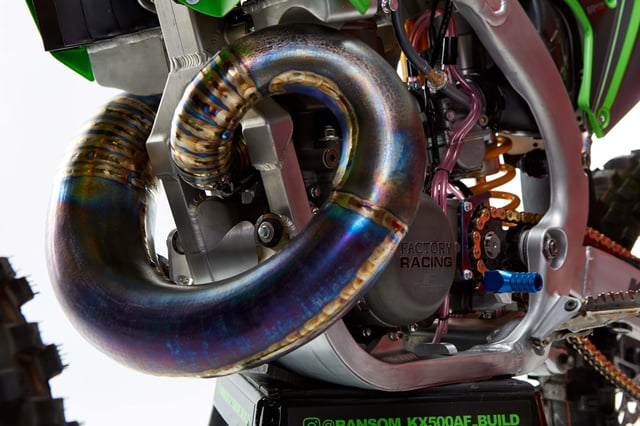
It pays to have friends who ride dirt bikes. Case in point, “A buddy of mine had a 2015 KX450F and his bike was apart, so I had him bring over his subframe,” reveals Ransom. “I knew I could make the subframe work, but I needed to find out how much I would need to change in order for it to work with the 2016 plastics. The subframe, tank and seat bolted right on. Since modifications weren’t needed, I decided to make the subframe out of titanium. I bought a brand new subframe, because I knew it was straight. I made a jig for it and created the titanium subframe. That concluded the chassis work.”
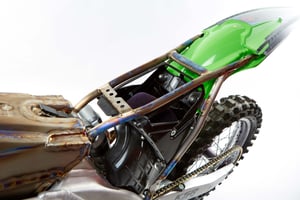
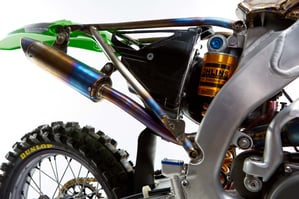
There are several major giveaways that Ransom’s KX500AF isn’t your garden variety fabrication build. One look at the hand-made titanium fuel tank is enough to blow the mind of any serious motorhead. Ransom replicated the KX450F tank, with some caveats. He opted for a sleek flush-mount cap. The maestro of metal also raised the top of the tank to compensate for the fuel capacity that he would otherwise lose with the flush-mount design. He also extended the bottom of the tank lower than the standard KX450F tank, because the KX500 engine doesn’t throw out as much heat. In doing so, Ransom was able to increase the fuel capacity to 2.4 gallons, without it looking like an oversize tank. W. Robert admits, “Form does follow function, but I really prefer things to look aesthetically correct. I understand the need for a bulky tank if you’re racing in the desert, but aesthetically I don’t like it [laughter]. Everything has to look streamlined for me to feel good about it.”
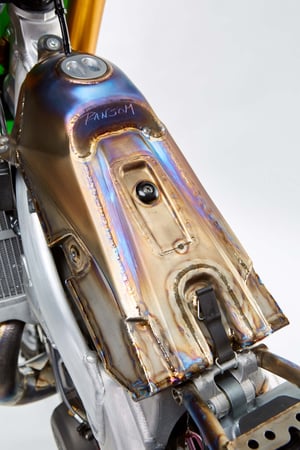
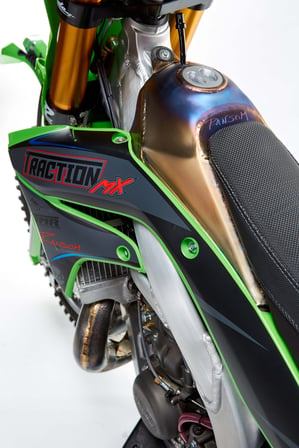
With the engine mounted in the frame and the fuel tank complete, Ransom set his sights on the pipe and silencer. Given that he shoehorned a KX500 engine into a KX450F chassis, there was no way the exhaust mounts would be in the same zip code as the expansion chamber. Lining up those elements would be a challenge. Ransom cleared that hurdle by making his own pipe and silencer. Tom Morgan designed his port work and head mods to work with the stock KX500 pipe or an FMF Fatty. According to Ransom, Morgan said that his engine upgrades worked better with the stocker. As a result, Ransom designed his titanium pipe around the stock shape. Once he had the cone lengths and diameters that he needed, it was a matter of making them contoured to fit the chassis.

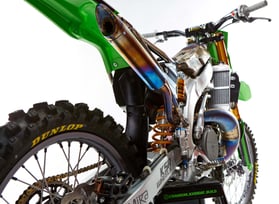
Cone pipes on two-strokes used to be the hot ticket…but a titanium cone pipe? That’s outside the box thinking. Ransom explains his thought process. “Everything that I do, even if it’s a side project for myself, is about growing in my craft. I had done a little bit of work with titanium in the past. I made a set of exhaust pipes for an engine sculpture I made a few years ago. I figured, why not learn how to shape titanium? I also knew that if we were going to get any type of publicity on this bike build and get it in a magazine, it would need to be different. I decided to go with some hand-made titanium parts. I really didn’t see that being done in the moto industry. The aftermarket business is so incredible for motocross and enduro. You can pretty much get any part that you can think of, and there are multiple companies making those products. Where’s the need for a handmade part?”

In the cooling department, Ransom used two right-side 2016 KX450F radiators from Mylers Radiators. Why did he choose two right-side radiators? The left-side radiator is longer and would have had significant interference with the pipe. He cut the tanks off the Myler cores and fabricated his own tanks to be higher capacity, and to fit around the pipe just the way he wanted them to.
Ransom’s attention to detail is obviously impeccable. For example, he didn’t want the titanium KX500 pipe to be jutting too far out on the right side, which was one of his pet peeves on other KX500AF builds. It’s possible for a rider to have clearance issues with the pipe if they get really low in a corner, thus dragging the pipe on the ground. In order to compensate for the pipe’s mass, he moved the water spout forward on the cylinder. There’s a water neck on the right side of the cylinder that’s more toward the rear. It pushes the expansion chamber out on the right side. In moving the neck forward, he was able to tuck the pipe in two more inches.
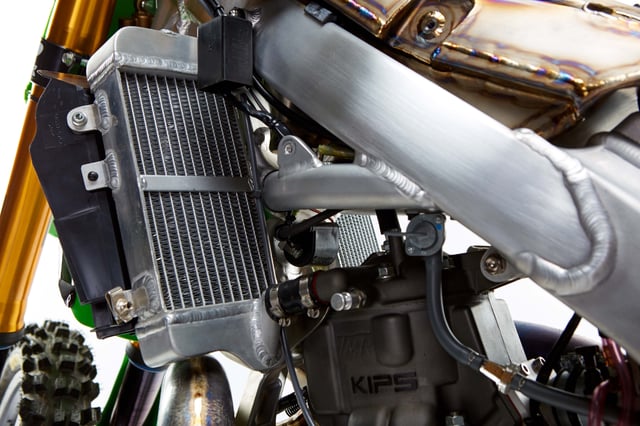
If you don’t believe that W. Robert Ransom is a metal artist, look no further than the KX500AF kickstarter. Your questioning will quickly turn to admiration. Ransom started with a block of 6061 billet aluminum, and he carved it by hand into shape. The only machining done to the block was in boring out the kicker boss. The rest of the work was done using a bandsaw and files. Truth be told, Ransom was initially hesitant to use 6061 aluminum, given the force required to kick the mighty KX500 engine to life. Not one to settle for anything less than perfection, he went back and remade another kickstarter out of much stronger 7075 aluminum.
Why did Ransom make the kickstarter out of hand, and how long did it take? He notes, “It took about 12 hours to make one. It’s faster for me to do the kickstarter the way that I did than to have it CNC cut. You would have to do the programming on the machine, the CAD drawing, and put all of your bores in. It would also require a five-axis CNC machine, because the kickstarter has twists and isn’t is really a flush straight plane.”
Ransom admits that the most challenging part of his KX500AF build was in fabricating the expansion chamber. He hammered the various cones by hand into shape. He paid close attention to the measurements needed to ensure that the bike would run properly. As Ransom puts it, “You have to be really precise when you’re hammering, stretching, and shrinking metal. On top of that, the titanium material is only 35-thousandths of an inch thick. You have to be precise when you weld titanium. Hammering titanium is like shaping a piece of spring steel. Anything you throw at it, the material springs back. That was the most fun, as well as the most time-intensive part of the build.”

Speaking of time, how long did it take W. Robert Ransom to complete his dream machine? Never mind the fact that it took two years from concept to completion, because Ransom wasn’t full-throttle fabricating on the KX500AF day in and day out. He admits that he probably could have shaved off quite a bit of time if he was getting paid to build the bike, but this project was a labor of love. At various points throughout the process Ransom said that he was demotivated, because the newness and excitement was waning. He weathered complacency, and we should all be thankful that he stayed the course. In total, Ransom put roughly 300 hours into his KX500AF build.
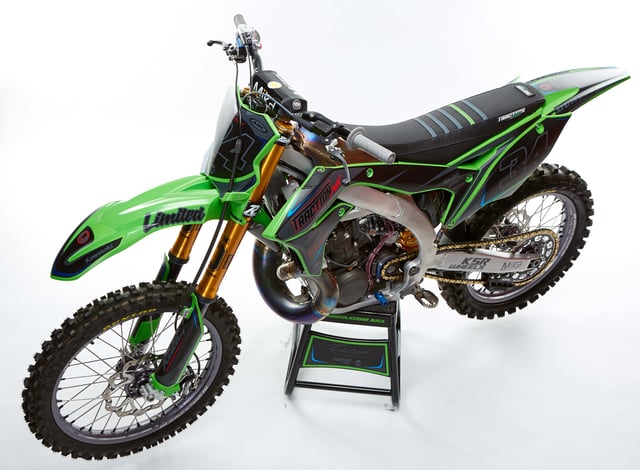
Once completed, the mighty Kawasaki KX500AF had its spot in the limelight. Ransom’s masterpiece was featured on the cover and inside the February 2019 issue of Dirt Bike magazine. Several Pro level riders then put the bike through a torture test, and the KX500AF passed with flying colors. After four hours of ride time, Ransom sold the bike to a private collection due to his hectic workload and limited space in his New Jersey studio.
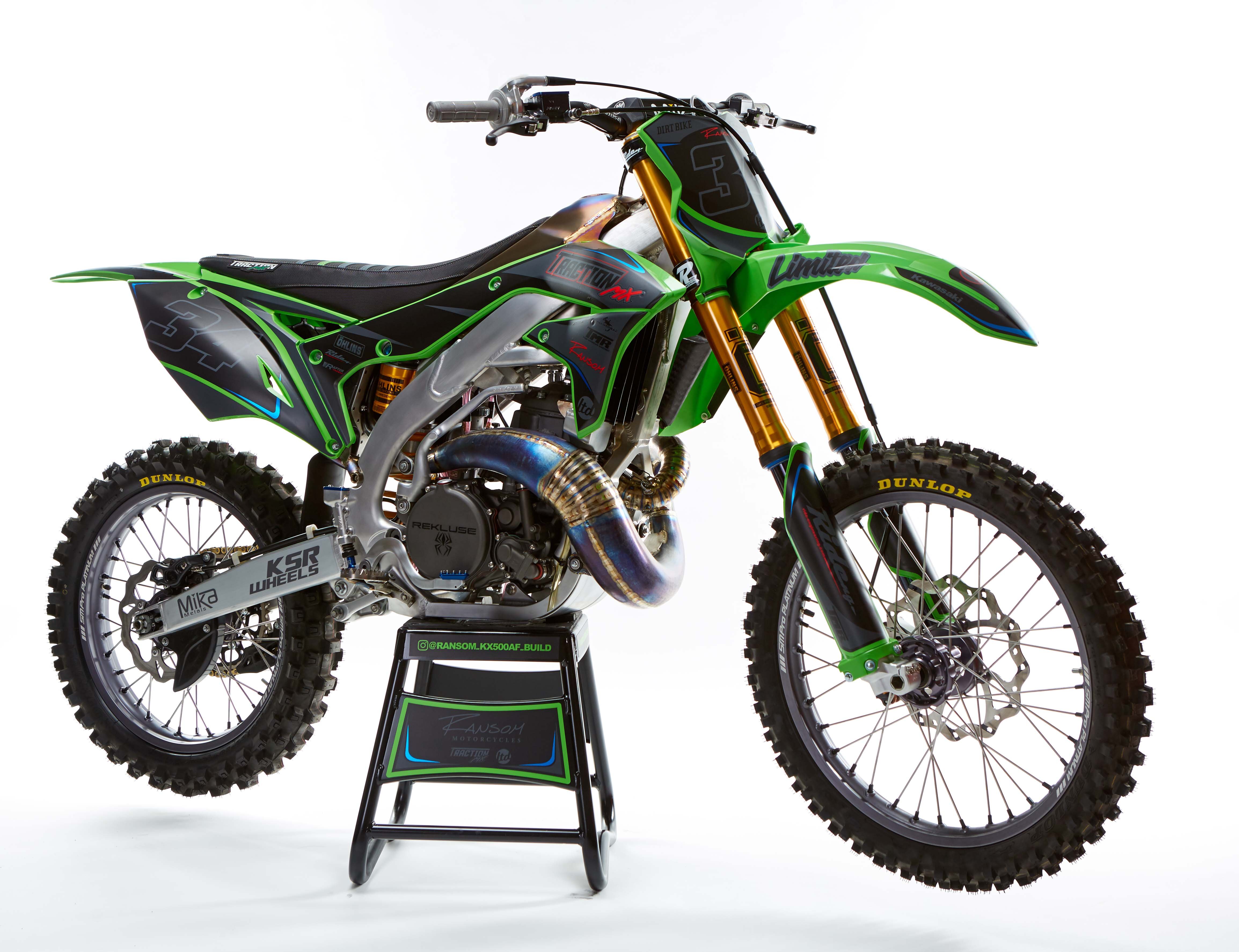
What’s next for W. Robert Ransom? “One of the next bikes I was thinking about building is a full titanium frame dirt bike. I would do the frame, swingarm, and everything else. Building frames and swingarms isn’t really a big deal. That’s just like another day on the job for me [laughter].”
To learn more about Ransom’s KX500AF build, take a look on his Instagram page @ransom_kx500af_build. You can also see some of his other work at www.wrobertransom.com.
